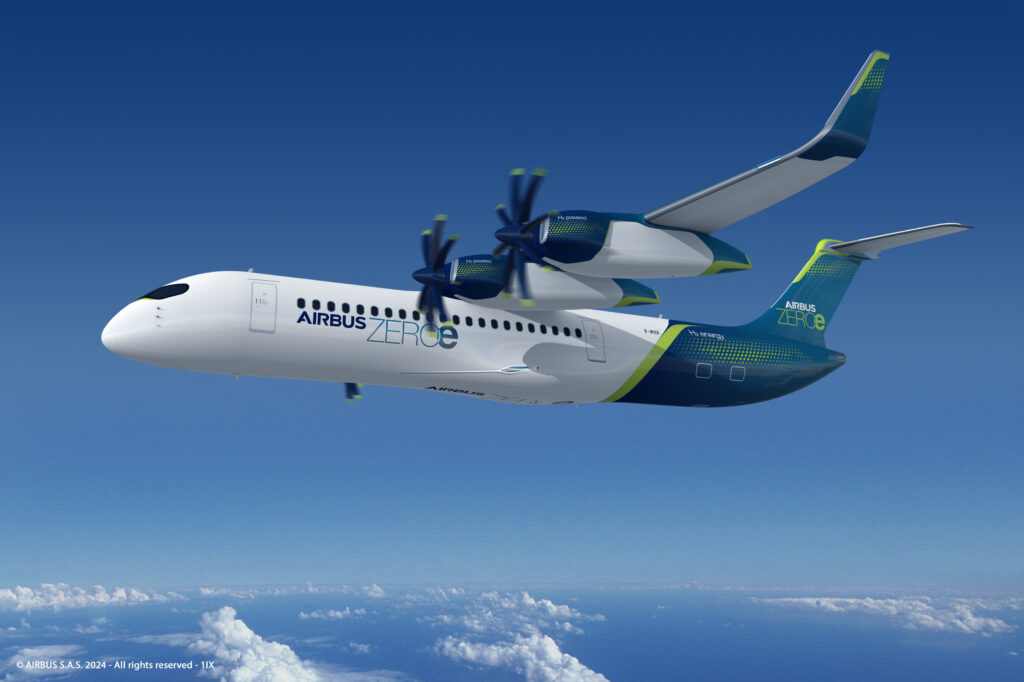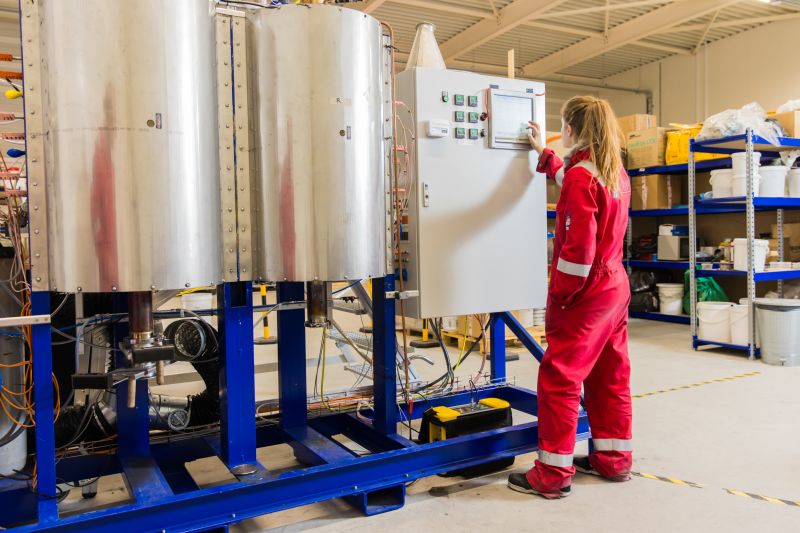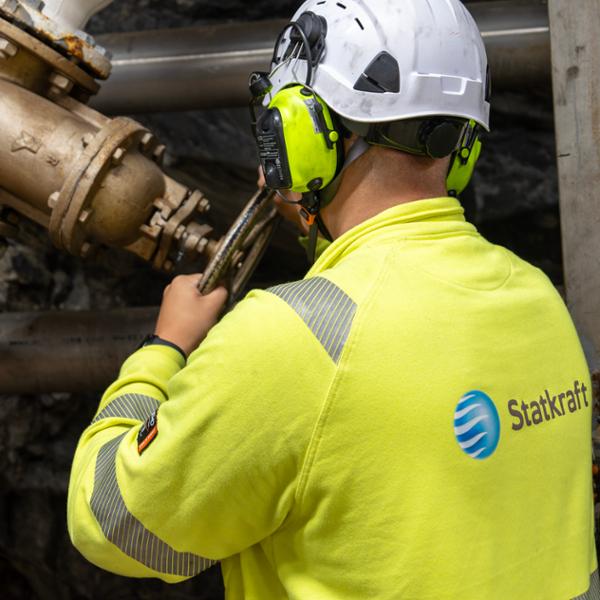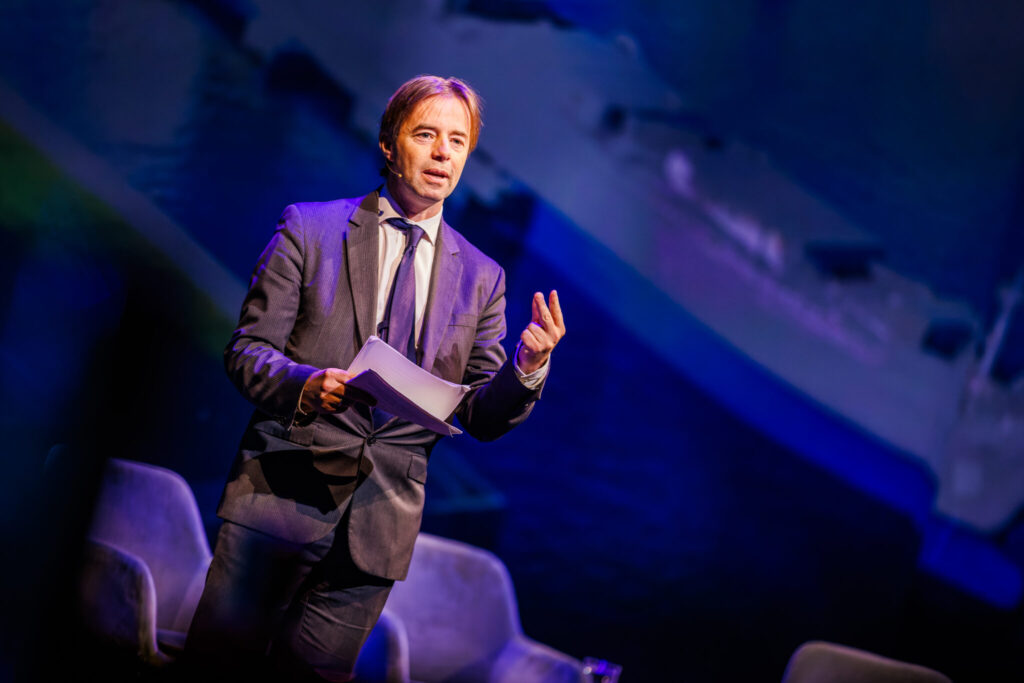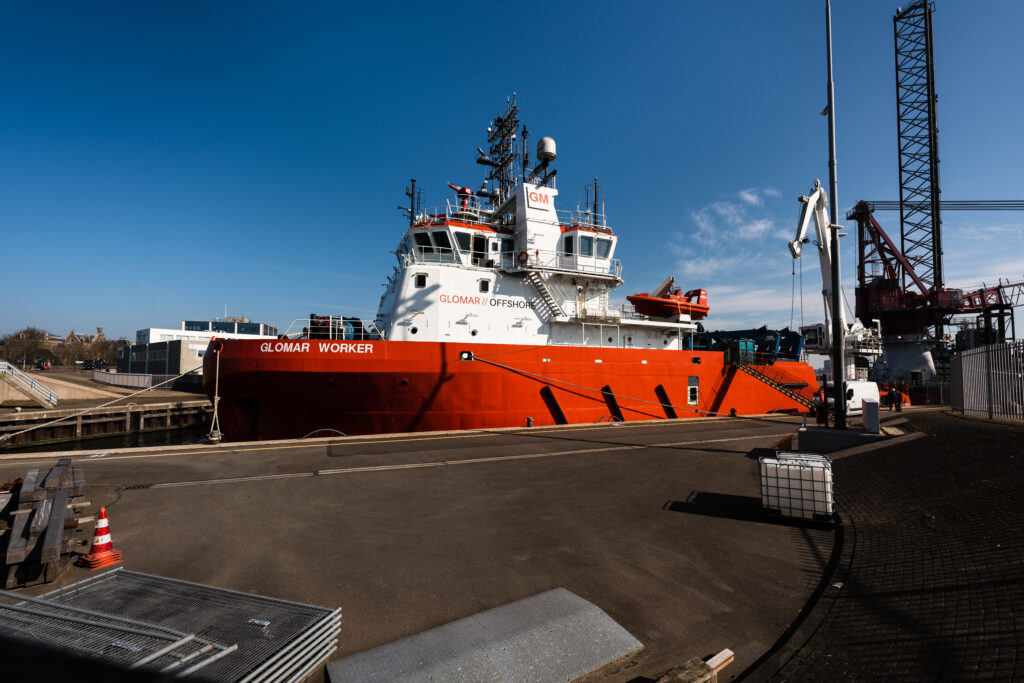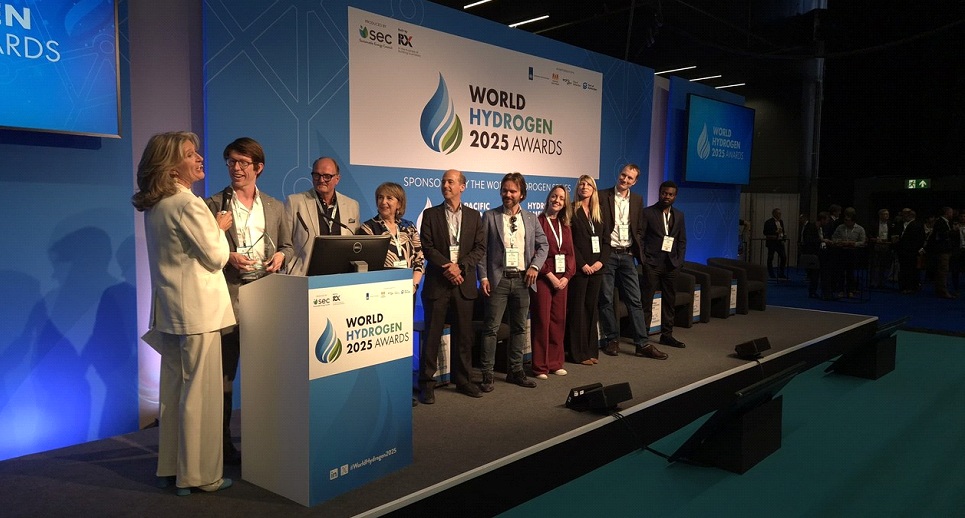Together with Port of Den Helder (PoDH), Norwegian energy giant Statkraft is working on the development of a plant for the production of green hydrogen. The intention is to start small and later scale up to national level. Yusuf Kilic (Statkraft) and Katja Naber (PoDH) on the plans and ambitions: “This project really boosts the hydrogen chain in several ways.”
This spring Statkraft – the largest producer of green energy in Europe – announced its intention to build and operate an electrolyser. This is to be located on the Oostoever industrial estate. Project developer Yusuf Kilic (Statkraft) was previously involved in the solar park on Kooypunt. “I knew about PoDH’s ambitions with green hydrogen. So the line was quickly established when it was decided at the headquarters in Oslo last year to develop green hydrogen projects in the Netherlands.”
Increasing sustainability Port of Den Helder
The local production of green hydrogen in the port of Den Helder is one of the puzzle pieces to be put in place in Zephyros, a project that focuses on establishing the total hydrogen chain: from production to sales and distribution. Katja Naber, commercial manager at Port of Den Helder, on the ambitions: “We want to make our port more sustainable in order to achieve the national and European climate goals. To this end, we are looking for clean, alternative fuels, not only for shipping, but also for making the port itself more sustainable. Green hydrogen can play an important role here.”
As mentioned, the hydrogen plant is part of the Zephyros project. In full, the project name stands for “Zero Emission in the Port of Den Helder, by using Hydrogen for transport over road and Sea. Local production of hydrogen with renewable energy is an important part of this. The project is structured as a two-stage rocket. It begins in 2026 with a small 2 megawatt electrolyzer, depending on the availability of infrastructure and availability of sufficient water and electricity.
Kilic: “Our goal is to produce 150 to 200 tons of green hydrogen per year in 2 years; roughly the annual consumption of four to six barges. Our ultimate goal is a plant with a capacity of 150 megawatts. But it seems that we won’t be able to start building it until around 2030, because the electricity grid we need for that is scheduled by Tennet for 2031-2034. Distribution of hydrogen will initially be by trucks and ships. Kilic: “When we scale up to phase 2, transport by road or water is no longer realistic. For the implementation of that phase, we depend on the construction of the national distribution pipelines.”
Offshore wind
 Although the electrolyser will run with renewable energy from offshore wind, there will be no direct connection to offshore wind farms. Delivery of green power will take place through the existing grid. “In consultation with suppliers, we will produce more hydrogen if there is a surplus of wind energy. In this way we will contribute with the electrolyser to relieve the national energy grid. That sounds simple, but it is extremely complicated to make agreements on this.”
Although the electrolyser will run with renewable energy from offshore wind, there will be no direct connection to offshore wind farms. Delivery of green power will take place through the existing grid. “In consultation with suppliers, we will produce more hydrogen if there is a surplus of wind energy. In this way we will contribute with the electrolyser to relieve the national energy grid. That sounds simple, but it is extremely complicated to make agreements on this.”
Not only the supply of wind energy, the distribution of the hydrogen produced also requires attention. The point, Kilic explains, is that there are no companies or organizations yet that are changing green hydrogen. “So we not only have to realize the technology, but also set up the trading network.” For the first, small-scale project, Port of Den Helder and Statkraft are in talks with local customers . “That quantity we can still distribute with trucks and ships. When we start to scale up, distribution by road or water transport is no longer realistic. For that phase, we are bound to build distribution pipelines.”
Research phase
The project is still in the research phase. “Right now the permit application is in preparation,” Kilic says. “Among other things, we are looking at safety, environmental effects and impact on the living environment. Depending on what comes out of that, we are going to further develop the design of the hydrogen plant. At the same time, we are in talks with Tennet and Liander, the Gasunie, the PWN water company and the HHNK water board. All these parties are needed to run the plant.”
Education is also part of the preparation process. Naber: “To make large-scale production and distribution of hydrogen possible, we already need to start training the people who will soon be able to run the plant. We are focusing partly on retraining people in the oil and gas world. In this way, Zephyros is not only contributing to the energy transition, but also to knowledge development and employment in the region.’
Boost to the hydrogen chain
Entrepreneurs and maritime users are responding enthusiastically, Naber continued. “More and more parties see the potential of hydrogen. Before, everyone was waiting for each other, but now that supply is coming in, you see that sectors are waking up. Our focus was initially on the maritime sector, but now industry and logistics and transport have also joined in. This project really gives an enormous boost to the hydrogen chain on several levels.’
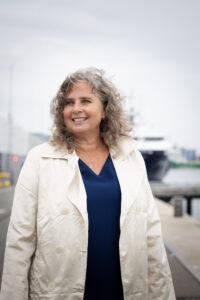
Challenges abound. One question, for example, is whether the water company will still be able to supply enough pure water for the electrolysis process in a few years. “That’s why we are including in the design the construction of a water treatment plant,” Kilic says. “An alternative would be to use seawater for this purpose. But I see that more as a long-term solution. Several companies are looking for innovative solutions, but currently it is still very difficult to produce hydrogen from seawater.”
Still, he is confident that the project will succeed. “The enthusiasm of everyone involved has created even more belief in the project. The people behind Zephyros are really determined to get this project done. The municipality and other agencies and authorities are also in cooperative mode. The importance of that drive I cannot stress enough.”
